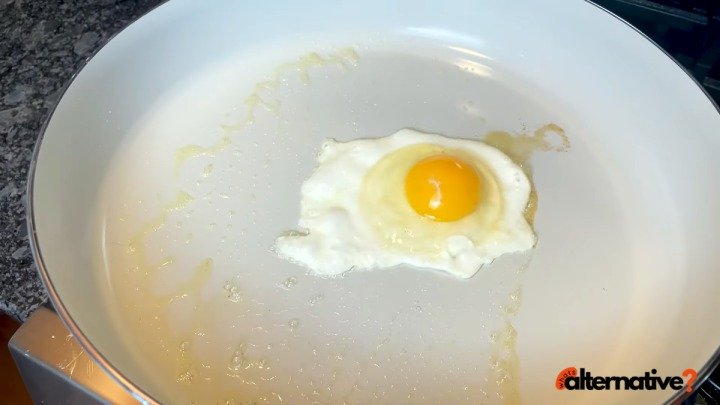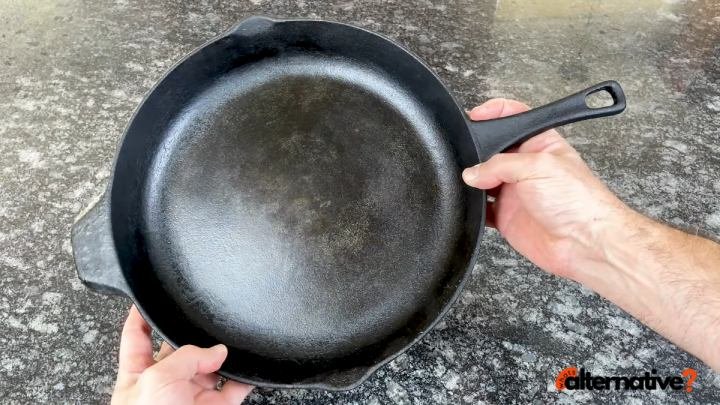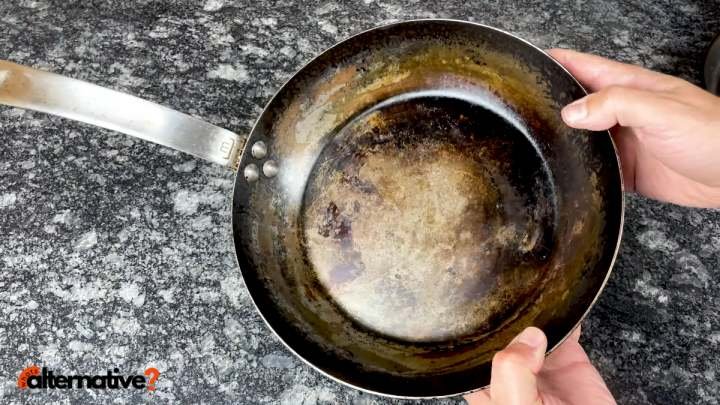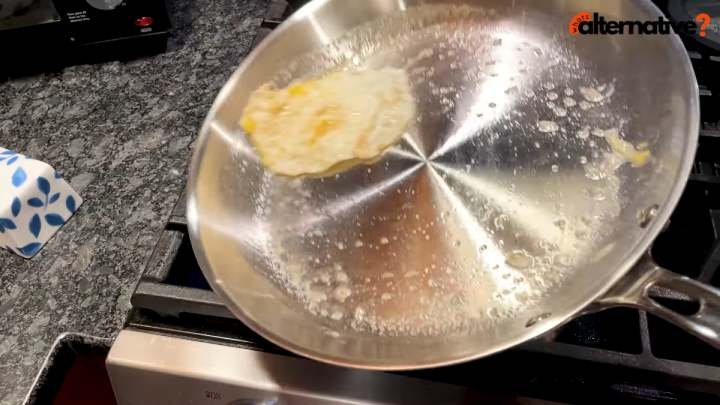Top Best Alternative to Non Stick Pan: Non-stick pans have long been a kitchen staple for their convenience, easy cleaning, and simple cooking experience. However, their limited lifespan and potential release of harmful fumes at high temperatures have led many to seek alternative options.
Key Takeaway:
- Ceramic Non-Stick: Closest to traditional non-stick, but durability is a trade-off.
- Cast Iron: Durable and versatile but demands careful maintenance.
- Carbon Steel: Lighter option with a slick surface but requires seasoning and care.
- Stainless Steel: Durable and safe, but less inherently non-stick and higher price point.
- Choosing Your Alternative: Consider your cooking needs and priorities when selecting the right non-stick alternative for your kitchen.
Top 4 Best Alternative to Non Stick Pan
The best alternatives to non-stick pans include ceramic for similar convenience with less risk, cast iron for durability and versatility, carbon steel for a slick surface, and stainless steel for durability with a sleek cooking surface, each with its own pros and cons.
Choose based on your cooking preferences and priorities. Today, we’ll explore some of the best alternatives to traditional non-stick pans, breaking down the pros and cons of each to help you make an informed choice for your kitchen.
1. Ceramic Non-Stick
Ceramic non-stick pans offer a compelling alternative to traditional Teflon-coated pans. They provide similar food release without the risk of toxic fumes at high temperatures.

- Pros: Similar food release to traditional non-stick, oven-safe at higher temperatures.
- Cons: Shorter lifespan compared to Teflon, may wear down after a year or two.
Ceramic pans are oven-safe at higher temperatures compared to their Teflon counterparts, making them a versatile choice. However, their downside lies in durability, as they tend to wear down and lose their non-stick properties after a year or two.
2. Cast Iron
Cast iron pans are renowned for their durability and longevity, offering a cooking experience that, with proper seasoning, comes close to non-stick convenience. They have virtually no heat limits, making them suitable for various cooking methods, including stovetops, ovens, grills, and campfires.

- Pros: Durable and long-lasting, versatile for various cooking methods.
- Cons: Requires seasoning and careful maintenance, heavy and may scratch surfaces.
However, cast iron requires careful maintenance, with periodic seasoning and handwashing to preserve its non-stick surface. Its weight and potential to scratch surfaces are notable drawbacks.
3. Carbon Steel
Carbon steel pans provide a slick non-stick surface when seasoned properly, and they are significantly lighter than cast iron. They can handle high heat and are oven-safe at elevated temperatures.

- Pros: Slick non-stick surface when seasoned properly, lighter than cast iron.
- Cons: Reacts to acidic foods, changes appearance over time, requires careful cleaning.
However, like cast iron, carbon steel requires seasoning and reacts to acidic foods. It also develops a distinctive appearance over time, and proper care is essential to maintain its non-stick properties.
4. Stainless Steel
Stainless steel pans are durable and versatile, offering a slick cooking surface with proper techniques. Unlike non-stick pans, they are broiler-safe and do not release toxic fumes when overheated. Stainless steel is non-reactive and doesn’t require seasoning, making it suitable for all types of cooking.

- Pros: Durable and versatile, broiler-safe, no toxic fumes when overheated.
- Cons: Not as inherently non-stick, requires practice to prevent sticking, can be challenging to clean, higher price point.
However, it lacks the inherent non-stick properties of traditional pans, requiring practice and effort to prevent food from sticking. Cleaning stainless steel pans can be more challenging, and they come at a higher price point.
Choosing the Right alternatives to nonstick pans

The ideal non-stick pan alternative depends on your cooking preferences and priorities. If you prioritize a pan for delicate ingredients like eggs, ceramic non-stick might be the closest match.
For versatility and durability, cast iron or carbon steel could be the right choices, though they require some effort in seasoning and maintenance.
Stainless steel offers a sleek cooking surface but may not match the non-stick convenience of other alternatives.
Conclusion
In conclusion, there are several alternatives to traditional non-stick pans, each with its unique set of advantages and disadvantages.
By understanding the characteristics of ceramic, cast iron, carbon steel, and stainless steel, you can make an informed decision based on your cooking needs and preferences.
Experimenting with different materials may lead you to discover the perfect non-stick pan alternative for your kitchen.
Read also:
